Roses with two distinct colors swirling on a single blossom always grab my attention.
These two-tone roses feel like living pieces of art right in the garden, showing off nature’s creative side with every petal.
There’s something bold yet graceful about them that you just don’t find with classic solid color or even striped roses.
If you’re curious about what makes these special roses different, where they come from, how to grow them, and why they’re worth a spot in your garden or bouquet, you’re in the right place.
I’ll cover their backstory, symbolic meaning, standout varieties, and care tips, so you end up with the best blooms possible.
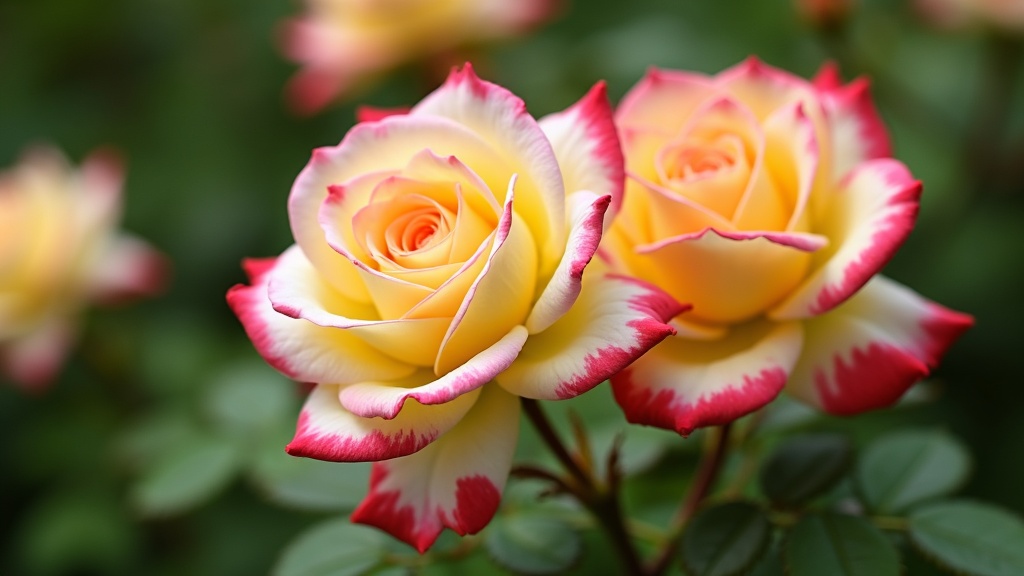
What Are Two-Tone Roses?
Two-tone roses are exactly what they sound like: rose blooms that display two clearly separated colors on their petals.
Usually, these differences show up as an outer petal edge in one shade and inner petals in another, or sometimes the top and underside of the petals will feature a strong color contrast.
A big draw of these roses is the reliable, sharp division between their hues, which isn’t the same as the striping you see in some novelty types or the speckling and “splashed” look of variegated roses.
Thanks to years of selective breeding, there are now varieties that push the boundaries well beyond what you’d spot growing wild.
Breeders have been working to produce reliable patterns; like soft yellow petals blushing into vibrant pink, or creamy whites framed in deep red.
While striped and variegated roses add fun unpredictability, two-tone roses deliver a controlled, balanced look that stands out in any collection.
- Two-tone roses: Petals display two distinct, separated colors. Edges versus centers, inner versus outer petals, or top versus bottom surfaces.
- Striped roses: Petals are streaked or striped with bold bands of color, sometimes erratic or blended.
- Variegated roses: Petals have patches, spots, or marbling—sort of a “painted” effect.
The Symbolism of Two-Tone Roses
Two-tone roses pack a different punch when it comes to meaning.
Their dual colors often represent unity, harmony, and balance. Imagine two people coming together or multiple feelings swirling as one.
Gifting a two-tone rose can say, “I treasure both our friendship and my deeper admiration for you,” or mark a new chapter where different qualities blend into something beautiful.
Because of that, they’re a top pick for wedding arrangements and any occasion that calls for something a little out of the ordinary.
For many, these roses symbolize “dual emotions.” A red and white rose, for instance, might hint at a blend of romantic love with pure friendship.
Roses that switch from warm yellow to pink can celebrate transitions and growth.
That unique symbolism, mixed with their rare look, is a big part of why these blooms are so appreciated in gifting and floral design.
Whether you use them to symbolize a turning point in a relationship or to represent a blend of feelings, they always serve as an eye catching conversation starter.
Popular Two-Tone Rose Varieties
There are a bunch of well loved two-tone roses out there, each with its own personality, color combination, and backstory. Here are some worth checking out for their style, scent, and visual impact.
- Double Delight: This is one of the most recognized two-tone roses around. It shows off creamy white centers with edges that deepen into cherry red or raspberry as the blooms open. Not only do they have a strong spicy sweet scent, but the petals are super velvety, making them a sensory treat in every way.
- Peace Rose: Famous for its role as a symbol of hope after WWII, the Peace rose has petals that start out yellow and fade to blush pink at the edges. They’re large blooms, and they just glow in afternoon sunlight. Many gardeners grow them for both their beauty and their backstory.
- Osiria Rose: Velvety deep red petals on top, snowy white undersides below. If you want drama in the garden or vase, Osiria roses deliver. The color split is bold and striking, especially right as the buds start to unfurl.
- Love Rose: You get rich, cupid red petals with clean white undersides, almost like rose petals dipped in cream. They hold their form well and look awesome in mixed arrangements, especially alongside pale pinks or whites.
- Kaleidoscope Rose: Blooms on this variety can show off shifting shades from yellow to coral pink and even take on hints of orange. Every bloom is different, so there’s always a little surprise factor with this type.
- Cherry Parfait: Bright white petals with bold red edges. As the cherry name hints, this variety is as cheerful as it gets and blooms steadily if you give it enough sun and food.
Other favorites include Mardi Gras (blending orange, pink, and yellow), and Double Delight’s sport cousin, Scentimental, which pairs stripes with two-tone color in a big way.
With so many options out there, you can find a two-tone rose to match pretty much any mood or garden palette.
Some gardeners even like trying their hand at making new two-tone hybrids by cross pollinating favorites, offering an extra layer of fun for those who love experimenting in the garden.
Just remember that breeding roses takes time and patience, but the reward can be a variety that’s unique to you.
Growing and Caring for Two-Tone Roses
Getting those crisp, bold colors in your own backyard is totally doable if you pay attention to a few basics.
Here’s what I’ve found really important for keeping two-tone roses happy and colorful:
- Soil: These roses thrive in rich, well draining soil. Add in plenty of compost, and shoot for a slightly acidic to neutral pH (about 6.0–6.5 if you like to be precise). Loose soil helps root systems pull up nutrients that give a boost to color.
- Sunlight: Full sun is key; at least 6 hours a day. The more light, the bolder the colors, especially on varieties that need sun to intensify their hues.
- Feeding: Two-tone blooms need steady nutrients. A good rose fertilizer or slow release balanced mix works well. Feed in early spring and after main flowering to keep plants energized and petal colors sharp.
- Pruning: Regular light pruning keeps air moving through the plant and encourages more blooms. Cut back to just above outward facing buds, and always clean your pruners between cuts to prevent disease spread.
- Greenhouse Growing: For the most consistent color, especially in places with wild climate swings, growing two-tone roses in a greenhouse or under a controlled environment can help. It reduces fading and keeps those distinct lines strong. If you don’t have a greenhouse, consider a simple hoop house or frost cloths for extra protection during extreme highs or lows.
Some challenges are worth knowing about.
Color can fade if the plant is stressed from summer heat or inconsistent watering, and certain two-tone varieties may be more prone to black spot or powdery mildew.
Keeping a consistent watering routine, mulching to keep roots cool, and checking leaves for early signs of trouble will keep problems in check.
Also, try to water early in the day and at ground level so leaves dry quickly, since this cuts down on disease risk.
If you’re growing in containers, make sure pots are big enough and drain freely.
Monitor soil moisture closely; containers dry out quicker than ground beds do.
Roses in pots may also benefit from partial afternoon shade in hotter regions to prevent overheating and color washout on blooms.
Where to Find Two-Tone Roses
You can pick up two-tone roses in several places, but making sure you’re actually getting a true variety (not just a mislabeled plant) is pretty important. Here’s where I suggest to start your search:
- Local nurseries: Nurseries with a good range of hybrid teas and floribundas often stock the most popular two-tone varieties and might even have some rare types if you check in.
- Online suppliers: Many specialty rose growers now sell directly through their websites. Look for names like Heirloom Roses, Weeks Roses, or David Austin for some of the widest selections.
- Garden center catalogs: Each winter and spring, mail order catalogs usually drop with a lineup of two-tone hybrids. Compare options for the biggest selection.
- Florists: If you want roses for a big occasion, upscale florists can track down two-tone roses for special events, especially classic types like Double Delight or Peace Rose.
Whenever you’re buying roses online or by mail, doublecheck reviews and always ask about plant guarantees.
Careful research helps buyers avoid disappointment and gets you the real deal, especially with popular varieties that sometimes get mixed up.
Also, joining rose gardener forums or checking with local rose societies is a smart way to get tips or even swaps for newer or regionally successful two-tone varieties.
Uses of Two-Tone Roses in Gardens & Floral Design
These roses are a dream for gardeners and florists who want something different. Their strong visual impact means they work great in:
- Garden focal points: Place a two-tone rose at the heart of a bed or along a pathway for a bloom that always gets noticed.
- Contrast plantings: Plant next to solid red, white, or yellow roses for an eye catching display. The color difference makes all the varieties look better.
- Bouquets and floral arrangements: Two-tone roses add elegance to wedding bouquets and stand out in luxury arrangements thanks to their artistic color variations.
- Collectors gardens: Collectors and rose lovers often track down rare two-tone hybrids to build a one of a kind rose bed. Showing them off during rose garden tours always gets lots of wows.
If you’re into crafts or dried flowers, two-tone petals also keep their color well when pressed, adding a splash of color to handmade gifts or art. Many home decor fans use dried two-tone blooms in shadow boxes or resin projects for a next-level cool touch.
Two-tone roses also make memorable table centerpieces or statement flowers in flower shows.
With their unique color combos, they fit both classic and modern garden styles.
Some designers use them to mark garden transitions or as living “dividers” between planting themes.
Their unpredictably bold patterns mean each season brings fresh beauty and inspiration to any gardener or floral artist who wants to experiment.
Recommended Products
- Two-tone rose plants and seeds: Look for Double Delight, Peace, or Osiria from trusted garden centers or online sellers. Check for healthy rootstock and clear variety labeling—plants grown on hearty rootstock often resist disease better.
- Specialized rose fertilizers and bloom boosters: Osmocote and Espoma offer rose specific blends that help bring out rich colors in your plants. Look for formulas with higher potassium to make bloom colors pop.
- Greenhouse supplies: Simple mini greenhouse kits, grow lights, or frost covers keep colors vibrant during early spring or wild weather, and can even jumpstart the blooming season in cold areas.
- Pruning and care kits: Get a sharp bypass pruner, a bottle of isopropyl alcohol (for cleaning blades), and a quality pair of gloves for safe handling. A soil test kit is also handy; healthy soil leads to the best color.
FAQs About Two-Tone Roses
Are two-tone roses natural or hybrid?
Most of the jaw dropping two-tone roses you see are the result of years of selective breeding. There are a few wild roses that show subtle two colored effects, but the crisp, clear patterns on Double Delight or Osiria are hybrids bred for maximum wow factor. Plant scientists and enthusiasts have put years into creating two-tone roses with reliable patterns, so they’re garden originals in their own right.
Which is the most famous two-tone rose?
The Peace Rose is probably the most famous two-tone rose ever bred. It’s been grown and awarded worldwide for decades, thanks to its beauty and deep history. Many gardens celebrate Peace as both a flower and a symbol of hope, making it a must have for rose lovers everywhere.
Do two-tone roses keep their color every season?
Two-tone roses will show off their trademark colors each year, but super hot or stressful weather can sometimes fade the contrast a bit. Keeping up with watering, feeding, and shading (if needed) helps keep those colors strong. Giving plants afternoon shade in the toughest heat waves protects visual impact and keeps the blooms looking their best.
Can I grow two-tone roses in containers?
Definitely! Just make sure to pick a large enough pot (at least 15–20 inches wide), use rich amended soil, and feed regularly. Container grown roses might need more frequent watering, especially in warm weather. Some growers even use rolling platforms, so they can move pots to catch morning sun and afternoon shade as needed throughout the growing season.
Wrapping Up
Two-tone roses add an extra layer of interest to the garden or vase, combining artistry, deep symbolism, and beauty.
Whether you’re after big, fragrant blooms for bouquets or want to brighten a garden corner with something a little more special, checking out the world of two-tone roses is a fun way to take your plant collection up a notch.
There’s really a variety for every color palette and purpose, so it’s worth finding a favorite and making it yours.
With a little care and the right knowhow, these showstoppers can bring joy and color for years to come.
Next in my Unusual Rose Colors Series: Orange & Coral Roses – Vibrant Choices for Modern Gardens.
Happy gardening and stay tuned!
Here’s a little transparency: Our website contains Amazon affiliate links. This means if you click and make a purchase, we may receive a small commission. Don’t worry, there’s no extra cost to you. It’s a simple way you can support our mission to bring you quality content.”

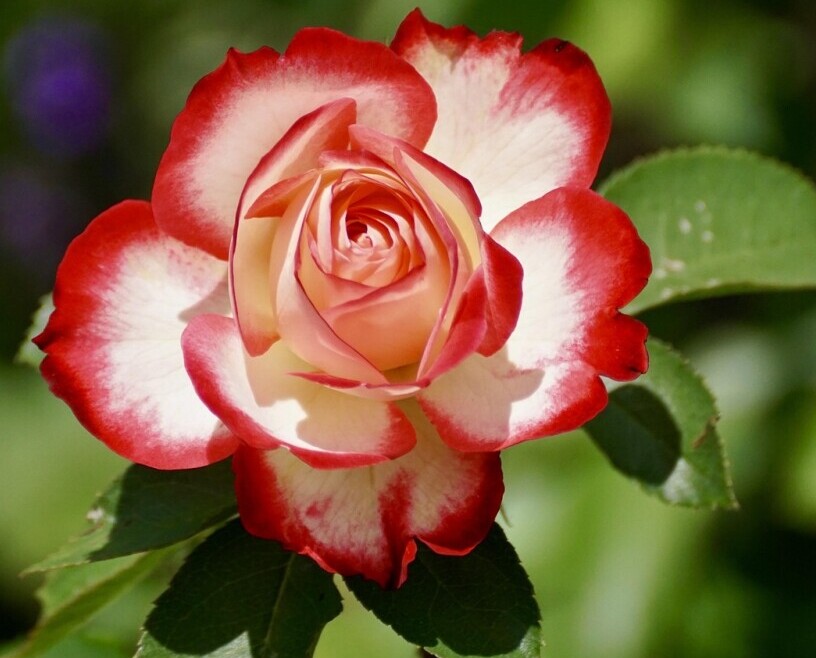
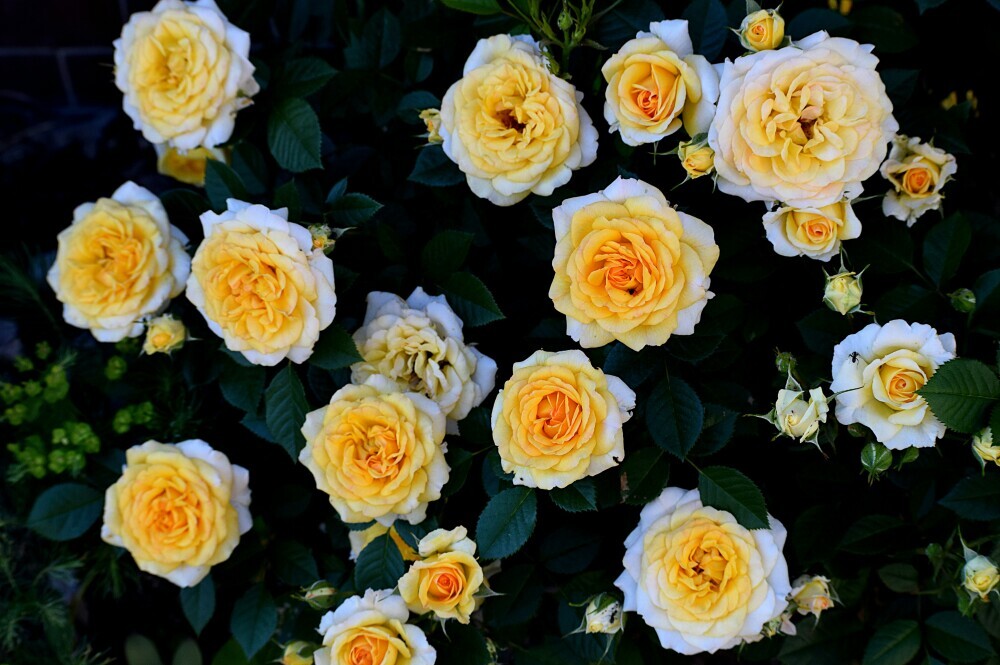
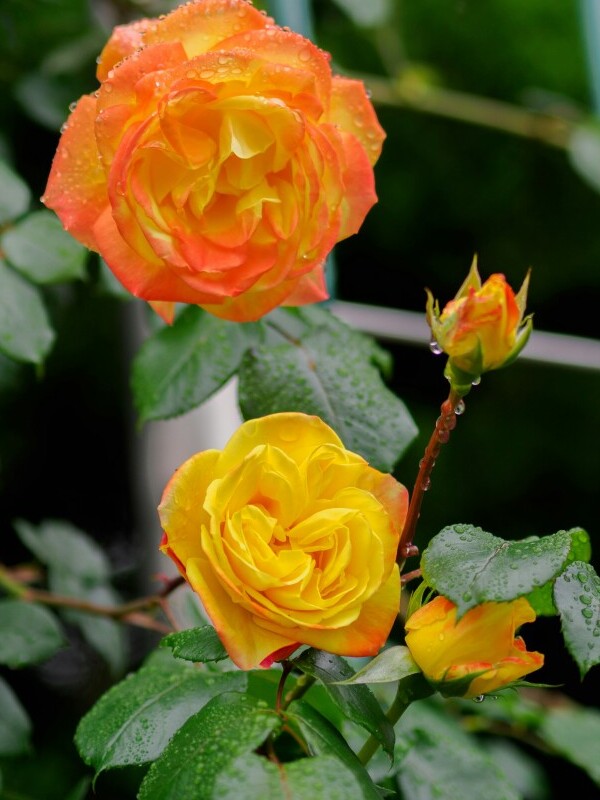
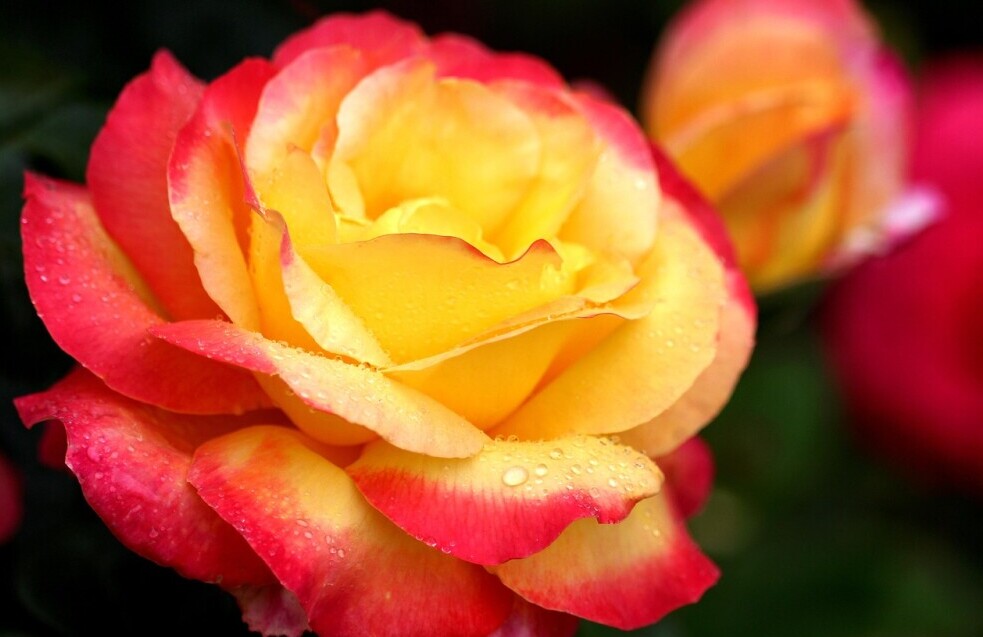
This was such a wonderful and inspiring read! The two-tone rose varieties you’ve shared are absolutely stunning, and I never realized just how many unique dual-colored combinations exist. Each one feels like a piece of art created by nature. My mother is very interested in horticulture, so I’m definitely referring your site to her—I know she’ll be excited to learn more about these roses and perhaps even try growing some herself.
I really appreciate how clearly you’ve presented the information, it makes it enjoyable for both casual readers and gardening enthusiasts alike. Posts like these not only educate but also spark curiosity to explore the beauty of plants further. Thank you for putting together such a lovely guide!
Thank you so much, Hari S Nair, for your kind words about the post on two-tone roses!
I am happy to hear that you found the article inspiring and that the rose varieties caught your eye.
It’s wonderful that your mother enjoys horticulture – I’d be delighted if she finds the information useful and inspiring for her own gardening endeavors.
I appreciate your feedback on the presentation of the content; my goal is to make the information accessible and enjoyable for both casual readers and gardening enthusiasts alike.
Thanks again for your comment and for sharing the post with your mother.